-
 Bitcoin
Bitcoin $108,489.6704
1.13% -
 Ethereum
Ethereum $2,502.0528
2.92% -
 Tether USDt
Tether USDt $1.0002
0.00% -
 XRP
XRP $2.1941
0.51% -
 BNB
BNB $655.3375
1.00% -
 Solana
Solana $151.5977
1.27% -
 USDC
USDC $0.9999
0.00% -
 TRON
TRON $0.2768
0.32% -
 Dogecoin
Dogecoin $0.1676
2.86% -
 Cardano
Cardano $0.5675
0.98% -
 Hyperliquid
Hyperliquid $40.6109
7.48% -
 Bitcoin Cash
Bitcoin Cash $500.7746
2.09% -
 Sui
Sui $2.8328
2.03% -
 Chainlink
Chainlink $13.4452
1.26% -
 UNUS SED LEO
UNUS SED LEO $9.1623
0.39% -
 Avalanche
Avalanche $18.2267
2.24% -
 Stellar
Stellar $0.2382
0.00% -
 Toncoin
Toncoin $2.8885
1.68% -
 Shiba Inu
Shiba Inu $0.0...01159
0.91% -
 Litecoin
Litecoin $87.1827
0.88% -
 Hedera
Hedera $0.1511
2.90% -
 Monero
Monero $315.4992
-0.59% -
 Polkadot
Polkadot $3.4663
2.34% -
 Bitget Token
Bitget Token $4.6118
-0.65% -
 Dai
Dai $1.0000
-0.01% -
 Ethena USDe
Ethena USDe $1.0003
0.02% -
 Uniswap
Uniswap $7.2989
4.69% -
 Pepe
Pepe $0.0...01003
5.73% -
 Aave
Aave $275.5616
7.15% -
 Pi
Pi $0.5181
-2.49%
Is it risky to hold Quant(QNT) for a long time? When is it appropriate to increase or reduce positions?
Holding QNT long-term is risky due to market volatility and Overledger's success; increase positions on bullish signals, reduce on bearish ones.
May 05, 2025 at 11:57 pm
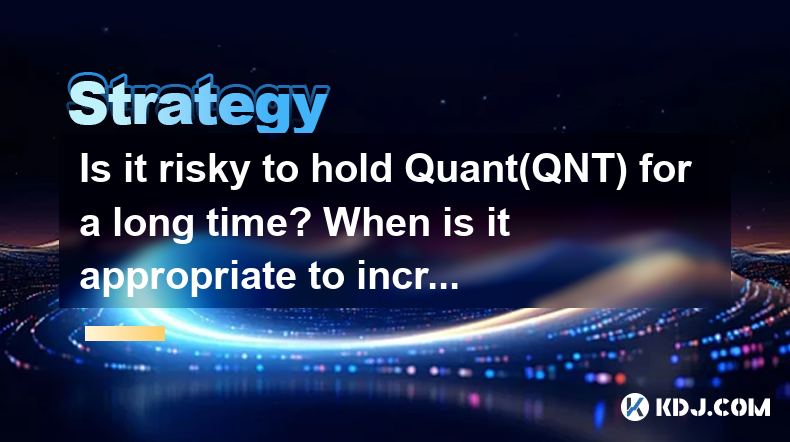
Is it Risky to Hold Quant (QNT) for a Long Time? When is it Appropriate to Increase or Reduce Positions?
Holding Quant (QNT), like any cryptocurrency, involves certain risks and considerations. Quant (QNT) is a utility token that powers the Overledger Network, a platform designed to facilitate interoperability between different blockchains. The primary question for investors is whether it is risky to hold QNT for an extended period and when it might be appropriate to adjust their positions.
Understanding the Risks of Holding QNT Long-Term
The risk associated with holding QNT long-term stems from several factors. Firstly, the cryptocurrency market is highly volatile, and QNT is no exception. Prices can fluctuate dramatically due to market sentiment, regulatory changes, and technological developments. Secondly, the success of QNT is closely tied to the adoption and performance of the Overledger Network. If the network fails to gain traction or faces significant competition, the value of QNT could decline.
Another risk is the potential for technological issues or security breaches within the Overledger Network. While the team behind Quant has a strong track record, no system is immune to vulnerabilities. Additionally, the regulatory environment for cryptocurrencies can change, impacting the viability of projects like Overledger and, consequently, the value of QNT.
Factors to Consider When Deciding to Hold QNT Long-Term
When considering whether to hold QNT long-term, investors should evaluate several key factors. Fundamental analysis of the Overledger Network is crucial. This involves assessing the technology's potential, the team's expertise, and the project's roadmap. Investors should also monitor the network's adoption rate and partnerships, as these can significantly influence QNT's value.
Market sentiment is another important factor. Positive news about the Overledger Network or the broader blockchain interoperability sector can drive up QNT's price. Conversely, negative developments can lead to sell-offs. Keeping an eye on market trends and sentiment can help investors make informed decisions about holding QNT long-term.
When to Increase Your Position in QNT
Increasing your position in QNT should be based on a thorough analysis of both the project's fundamentals and market conditions. Bullish signals for increasing your position include significant technological advancements or partnerships announced by the Overledger Network. For example, if Overledger secures a major partnership with a leading financial institution, it could signal increased demand for QNT.
Additionally, if the broader cryptocurrency market is experiencing a bullish trend, it might be an opportune time to increase your position in QNT. However, investors should be cautious and not chase prices during extreme market euphoria. A dip in the market can also present a buying opportunity, but it's essential to ensure that the dip is not a result of fundamental issues with the Overledger Network.
When to Reduce Your Position in QNT
Reducing your position in QNT might be appropriate under certain conditions. Bearish signals include negative developments within the Overledger Network, such as security breaches or significant delays in the project's roadmap. If the network faces increasing competition from other interoperability solutions, it could also be a sign to reduce your position.
Market conditions can also influence the decision to reduce your position. If the broader cryptocurrency market is experiencing a bearish trend, it might be wise to take profits or cut losses. Additionally, if QNT's price has risen significantly and appears overvalued based on fundamental analysis, it might be a good time to reduce your exposure.
How to Monitor and Adjust Your QNT Position
Monitoring and adjusting your position in QNT requires a disciplined approach. Here are some steps to consider:
Stay Informed: Regularly follow news and developments related to the Overledger Network and the broader blockchain interoperability sector. Websites like CoinDesk, Cointelegraph, and the official Quant blog can provide valuable insights.
Use Technical Analysis: Tools like moving averages, RSI, and MACD can help you identify potential entry and exit points for QNT. However, technical analysis should be used in conjunction with fundamental analysis for a comprehensive view.
Set Price Alerts: Use cryptocurrency tracking apps or platforms to set price alerts for QNT. This can help you stay updated on significant price movements and make timely decisions.
Diversify Your Portfolio: While QNT might be a promising investment, it's essential to maintain a diversified portfolio to mitigate risk. Consider allocating only a portion of your investment capital to QNT and spreading the rest across other assets.
Review Your Position Regularly: Periodically review your position in QNT based on the factors mentioned above. Adjust your holdings as necessary to align with your investment strategy and risk tolerance.
Frequently Asked Questions
Q: How does Quant's Overledger Network differ from other blockchain interoperability solutions?
A: Overledger Network differentiates itself by offering a layer that sits above multiple blockchains, allowing them to interact seamlessly. Unlike some competitors that focus on specific blockchains, Overledger aims to be a universal solution, supporting a wide range of blockchains and enabling complex multi-chain applications.
Q: What role does the QNT token play in the Overledger Network?
A: The QNT token is essential for the operation of the Overledger Network. It is used to pay for transaction fees, access the network's services, and participate in governance. Holding QNT also allows users to run their own Overledger nodes, contributing to the network's decentralization.
Q: How can I securely store my QNT tokens?
A: QNT tokens can be securely stored in several ways. The most common methods include using a hardware wallet like Ledger or Trezor, which offers offline storage and high security. Alternatively, you can use a reputable software wallet like MetaMask or Trust Wallet, which provides a balance between security and ease of use. Always ensure to back up your wallet's recovery phrase and keep it in a safe place.
Q: Are there any upcoming events or milestones for the Overledger Network that could impact QNT's price?
A: The Overledger Network has a roadmap that includes various milestones such as new partnerships, technological enhancements, and the expansion of its ecosystem. While specific events can influence QNT's price, it's important to follow official announcements and updates from Quant to stay informed about potential catalysts.
Disclaimer:info@kdj.com
The information provided is not trading advice. kdj.com does not assume any responsibility for any investments made based on the information provided in this article. Cryptocurrencies are highly volatile and it is highly recommended that you invest with caution after thorough research!
If you believe that the content used on this website infringes your copyright, please contact us immediately (info@kdj.com) and we will delete it promptly.
- Bitcoin's Bumpy Ride: Profit-Taking Slows Momentum, What's Next?
- 2025-06-30 20:30:11
- Bitcoin's Price Stall: Decoding the ETF Inflows Mystery
- 2025-06-30 20:30:11
- Ripple XRP, Bitcoin, and Solaris Presale: What's the Buzz?
- 2025-06-30 18:50:11
- SpaceX, Mirror Tokens, and Investors: A Wild Ride to the Future?
- 2025-06-30 19:10:22
- Arbitrum (ARB) and Robinhood: Partnership Rumors Fuel Price Surge to $0.4289?
- 2025-06-30 19:10:22
- Jasmy Coin, Bitcoin, and the Rise of Solaris Presale: What's the Buzz?
- 2025-06-30 18:30:12
Related knowledge
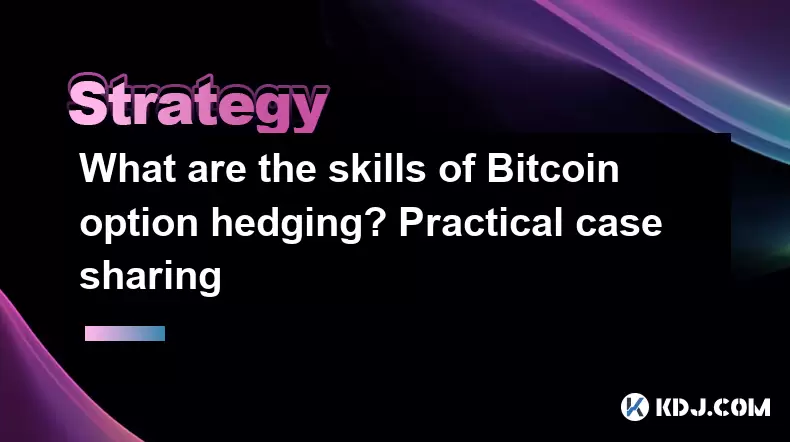
What are the skills of Bitcoin option hedging? Practical case sharing
Jun 24,2025 at 04:01pm
Understanding Bitcoin Option HedgingBitcoin option hedging is a risk management strategy used by traders and investors to protect their positions in the volatile cryptocurrency market. By using options, individuals can limit potential losses while retaining the opportunity for profit. In essence, it allows one to insulate against adverse price movements...
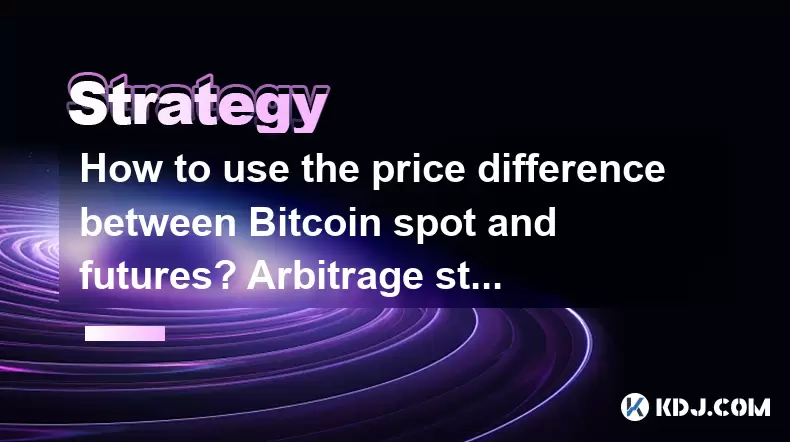
How to use the price difference between Bitcoin spot and futures? Arbitrage strategy
Jun 20,2025 at 02:56pm
Understanding Bitcoin Spot and Futures MarketsTo effectively leverage arbitrage opportunities between Bitcoin spot and futures markets, it's essential to understand the fundamental differences between these two types of markets. The spot market refers to the direct buying and selling of Bitcoin for immediate delivery at the current market price. In cont...
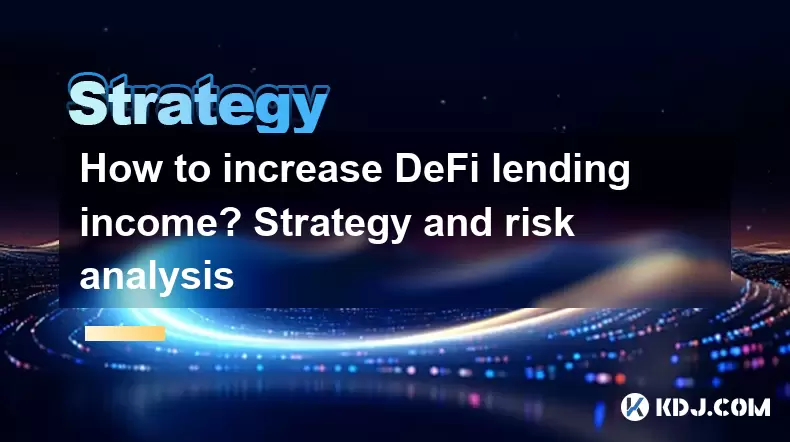
How to increase DeFi lending income? Strategy and risk analysis
Jun 24,2025 at 02:08pm
Understanding DeFi Lending and Its Income PotentialDeFi (Decentralized Finance) lending has emerged as a popular way to earn passive income in the cryptocurrency space. Unlike traditional banking systems, DeFi lending platforms allow users to lend their crypto assets directly to borrowers without intermediaries. The lenders earn interest based on the su...
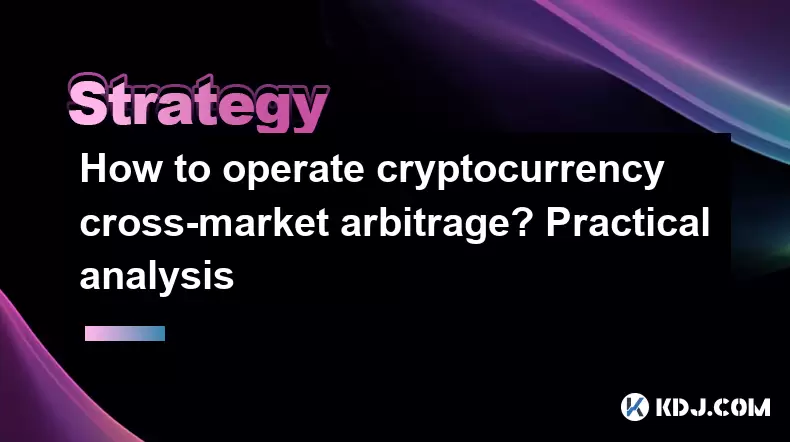
How to operate cryptocurrency cross-market arbitrage? Practical analysis
Jun 23,2025 at 04:01am
Understanding Cryptocurrency Cross-Market ArbitrageCryptocurrency cross-market arbitrage involves taking advantage of price differences for the same digital asset across different exchanges. The core idea is to buy low on one exchange and sell high on another, capturing the profit from the discrepancy. This strategy relies heavily on real-time market da...

How to make profits from high-frequency cryptocurrency trading? Sharing core skills
Jun 19,2025 at 05:07pm
Understanding High-Frequency Cryptocurrency TradingHigh-frequency trading (HFT) in the cryptocurrency market involves executing a large number of trades at extremely fast speeds, often within milliseconds. This method relies on small price discrepancies across exchanges or within a single exchange’s order book. Traders use complex algorithms and ultra-l...

What are the methods of cryptocurrency quantitative trading? Detailed analysis
Jun 22,2025 at 11:07pm
Understanding the Core of Cryptocurrency Quantitative TradingCryptocurrency quantitative trading refers to the use of mathematical models and algorithms to execute trades in the digital asset market. Unlike traditional discretionary trading, which relies heavily on human judgment, quantitative trading leverages data-driven strategies to identify profita...

What are the skills of Bitcoin option hedging? Practical case sharing
Jun 24,2025 at 04:01pm
Understanding Bitcoin Option HedgingBitcoin option hedging is a risk management strategy used by traders and investors to protect their positions in the volatile cryptocurrency market. By using options, individuals can limit potential losses while retaining the opportunity for profit. In essence, it allows one to insulate against adverse price movements...

How to use the price difference between Bitcoin spot and futures? Arbitrage strategy
Jun 20,2025 at 02:56pm
Understanding Bitcoin Spot and Futures MarketsTo effectively leverage arbitrage opportunities between Bitcoin spot and futures markets, it's essential to understand the fundamental differences between these two types of markets. The spot market refers to the direct buying and selling of Bitcoin for immediate delivery at the current market price. In cont...

How to increase DeFi lending income? Strategy and risk analysis
Jun 24,2025 at 02:08pm
Understanding DeFi Lending and Its Income PotentialDeFi (Decentralized Finance) lending has emerged as a popular way to earn passive income in the cryptocurrency space. Unlike traditional banking systems, DeFi lending platforms allow users to lend their crypto assets directly to borrowers without intermediaries. The lenders earn interest based on the su...

How to operate cryptocurrency cross-market arbitrage? Practical analysis
Jun 23,2025 at 04:01am
Understanding Cryptocurrency Cross-Market ArbitrageCryptocurrency cross-market arbitrage involves taking advantage of price differences for the same digital asset across different exchanges. The core idea is to buy low on one exchange and sell high on another, capturing the profit from the discrepancy. This strategy relies heavily on real-time market da...

How to make profits from high-frequency cryptocurrency trading? Sharing core skills
Jun 19,2025 at 05:07pm
Understanding High-Frequency Cryptocurrency TradingHigh-frequency trading (HFT) in the cryptocurrency market involves executing a large number of trades at extremely fast speeds, often within milliseconds. This method relies on small price discrepancies across exchanges or within a single exchange’s order book. Traders use complex algorithms and ultra-l...

What are the methods of cryptocurrency quantitative trading? Detailed analysis
Jun 22,2025 at 11:07pm
Understanding the Core of Cryptocurrency Quantitative TradingCryptocurrency quantitative trading refers to the use of mathematical models and algorithms to execute trades in the digital asset market. Unlike traditional discretionary trading, which relies heavily on human judgment, quantitative trading leverages data-driven strategies to identify profita...
See all articles

























































































